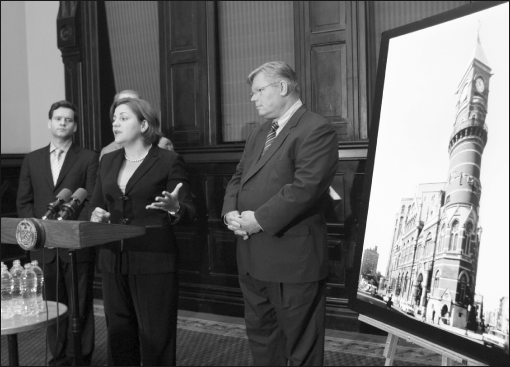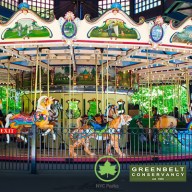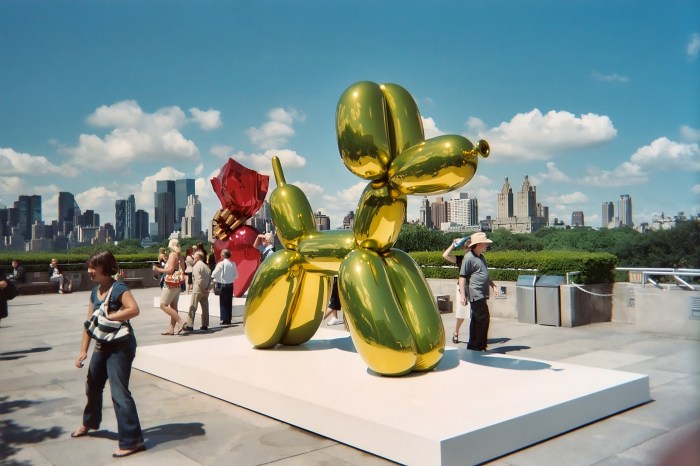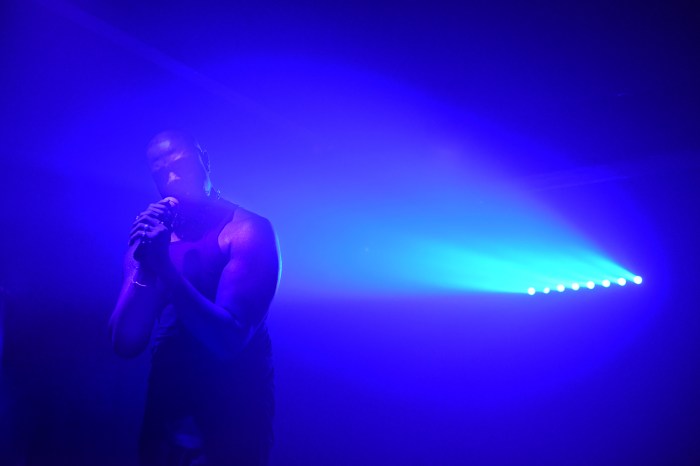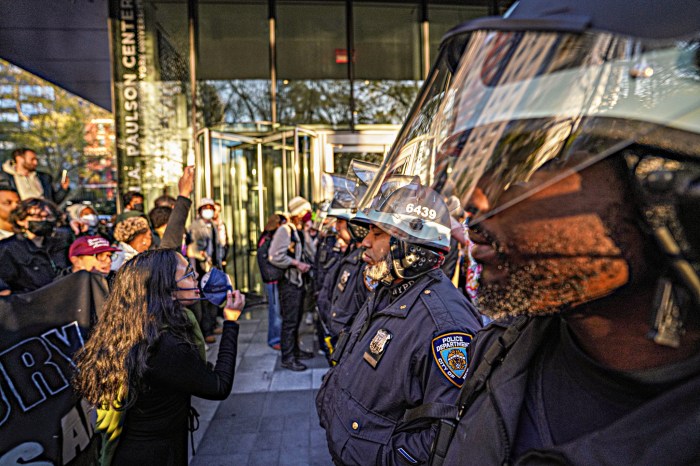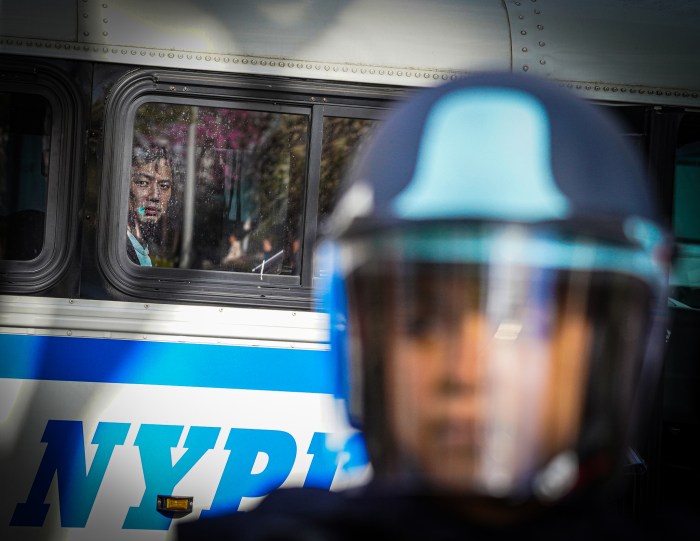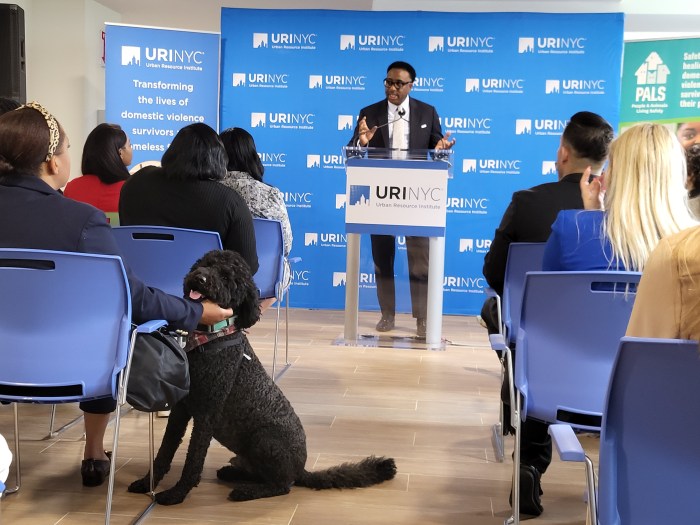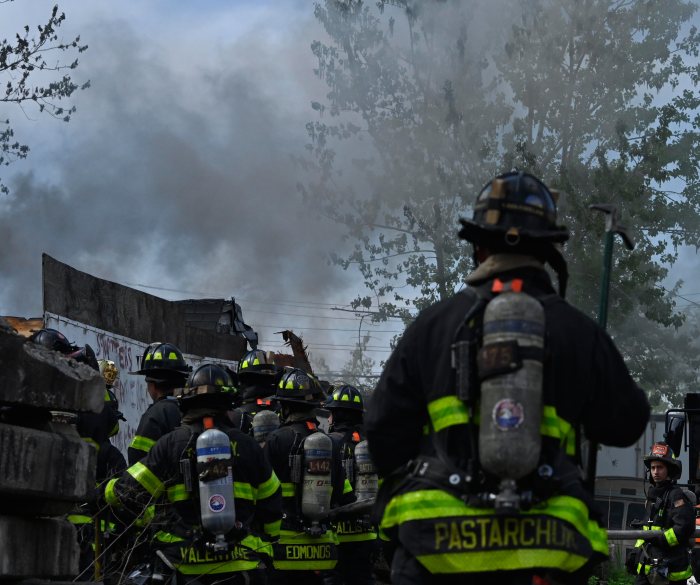By Albert Amateau
Villagers who have long been demanding the renovation of the Jefferson Market Library’s exterior celebrated the announcement on Tuesday that new city funding has assured the project.
Council Speaker Christine Quinn joined State Senator Tom Duane, New York Public Library President Paul LeClerc and Village leaders in the community room of the landmarked library to announce that the new funding brings the total allocation to more than $7 million for renovating the facade, windows, roof and tower of the landmarked building erected in 1877 as a courthouse.
The beginning of construction is planned for June 2009 and is expected to be completed in two years. A two-month design phase includes review by the Landmarks Preservation Commission because the building is a designated New York City landmark. A final design and development of construction documents will follow and be submitted to contractors for bidding.
“It’s finally happening and very much welcome,” said Marilyn Dorato, president of the Greenwich Village Block Associations, a coalition of Village block associations. Dorato organized a series of public meetings more than a year ago to renew the call for preserving the deteriorating exterior of the library. Since 2003, the Sixth Ave. and W. 10th St. sides of the library have been obscured by a sidewalk shed erected to protect people from fragments of limestone and brick falling from the facade.
“We all know that the Jefferson Market Library is one of the great library buildings in the city,” Quinn said. “In 1880, it was cited as one of the 10 most beautiful buildings in the country. But in the past few years you had to squint to see it because of the scaffold.”
Quinn recalled that when Duane was city councilmember for the Village in 1992 — and she was then on his staff — he was able to get more than $700,000 allocated for restoring the building. Added to that, Quinn this year allocated $2.7 million in addition to $1.39 million she earmarked in previous years. Also this year, Mayor Bloomberg provided matching funds of $2.2 million for the library restoration.
It was uncertain last year whether previous funds appropriated for a redesign of the library’s interior could be reallocated for facade and structural work. But in February 2007, LI/Salzman Architects completed a report funded by Quinn and Duane that concluded that because of significant deterioration of the sandstone and brickwork, plus open mortar joints and cracked stone, water had penetrated the facade causing the stonework to shift and settle and allowing the building’s iron structure to rust.
In addition, it was found that the Sixth Ave. portico has detached slightly from the facade and leans slightly toward the street.
All but $184,000 — spent for interior design work — of more than $2 million previously funded will be transferred to the exterior project. The work includes shoring up deficiencies that contributed to the deterioration and returning the building to its original splendor.
“This kind of weather is the reason why we have to fix the facade,” said Duane, referring to the steady rain on Tuesday during the public event at the library. “Rain and snow have taken their toll. We want to restore the building to the landmark standards it deserves and when we’ve done that we’ll be able to decide on how to make the library more user-friendly,” Duane said.
Peter Falk, a member of the West Village Committee and a longtime advocate for restoring the building, said “It makes sense to tend to the outside first. This is our landmark and I’m grateful that the exterior work is finally funded.”
Brad Hoylman, chairperson of Community Board 2, said the restoration of the library’s exterior has long been a high priority for the board.
“This is arguably the most iconic building in the Village,” he said.
Designed by Frederick Clark Withers and Calvert Vaux in 1875 and completed two years later, the courthouse was where Harry K. Thaw was found guilty of murdering the architect Stanford White and where Mae West was prosecuted for the sexual content of her shows.
The courthouse was erected on the site of the Jefferson Market, where a 100-foot-tall wooden fire tower kept watch over the Village. The courthouse tower is also 100 feet tall and holds the original fire bell from its wooden precursor.
By 1945 the building was no longer used as a courthouse and other agencies had occupied it. A 1958 decision to demolish the building was fought by Village advocates, including Margot Gayle, the late Philip and Ruth Wittenberg and E.E. Cummings, the poet who lived on Patchin Pl., in the shadow of the tower.
In 1961, Mayor Robert Wagner, Jr., agreed to convert the building to a library, and Giorgio Cavaglieri, a restoration architect, was given the commission for the redesign a few years later. Cavaglieri died in May of this year at the age of 95. The building was converted in 1966 and opened as a library in 1967.
The Jefferson Market Garden on the south side of the library was the site of the Women’s House of Detention until it was demolished in 1973 and replaced by the garden.



